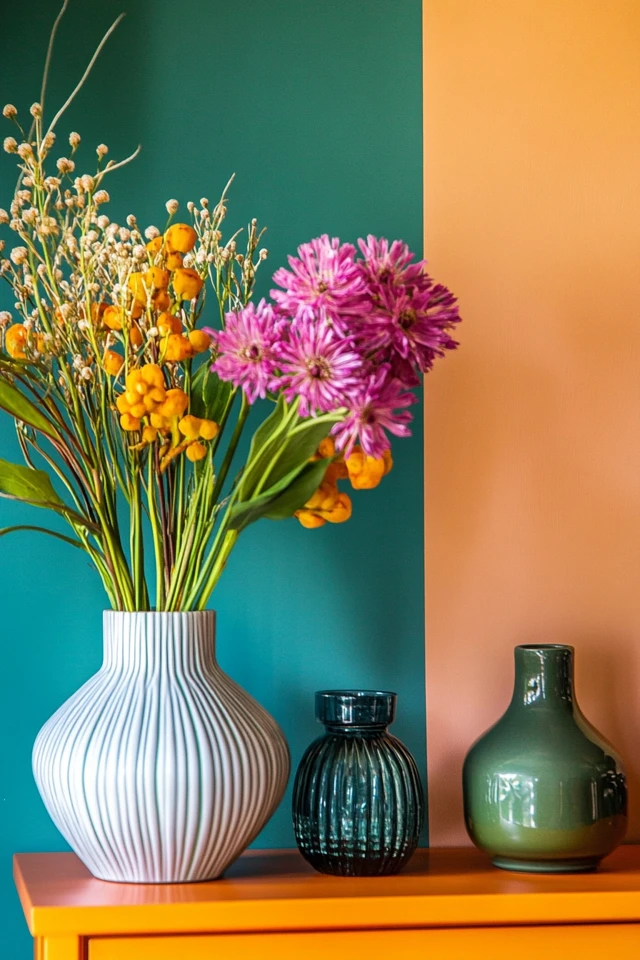When it comes to room design, color is one of the most powerful tools you can use to shape the mood and energy of a space. But let’s face it—too much color can quickly overwhelm, while too little can feel uninspired. The key to creating a colorful aesthetic room is striking the perfect balance: bold yet harmonious, vibrant yet soothing.
I learned this lesson the hard way when I decided to revamp my bedroom in college. I went all in with bright yellow walls, a red bedspread, and blue furniture. Let’s just say it was… a lot. Every time I walked into the room, it felt chaotic, like it couldn’t decide what it wanted to be. That experience taught me the importance of restraint and how to layer colors in a way that feels cohesive and intentional.
In this post, I’ll guide you through the art of designing a colorful aesthetic room that feels vibrant but not overdone. Whether you’re aiming for bold pops of color or a dreamy pastel palette, these tips will help you create a space that’s perfectly balanced and undeniably you.
Why Color Matters in Interior Design
Color affects more than just the look of a room—it influences the way you feel in the space.
- Energizing Colors: Bright yellows, oranges, and reds create a lively and stimulating environment.
- Calming Colors: Blues, greens, and soft pastels bring tranquility and relaxation.
- Neutral Colors: Whites, beiges, and grays serve as the perfect backdrop for adding pops of color without overwhelming the senses.
The trick is to use color intentionally, layering it into your room in ways that enhance its functionality and vibe.
1. Start with a Neutral Base
To prevent your room from feeling chaotic, begin with a neutral foundation.
- Neutral Walls: Paint your walls a soft white, beige, or light gray to create a blank canvas.
- Neutral Furniture: Choose large furniture pieces, like your bed or sofa, in neutral tones to anchor the space.
- Why It Works: A neutral base allows colorful accents to shine without competing for attention.
2. Choose a Color Palette
Limiting your color palette to 3-4 main shades will help your room feel cohesive and intentional.
- Complementary Colors: Use opposite colors on the color wheel (e.g., blue and orange) for a bold, dynamic look.
- Analogous Colors: Choose colors that are next to each other on the wheel (e.g., pink, peach, and coral) for a harmonious, gradient effect.
- Accent Color: Pick one color to stand out as your focal point and use the others as supporting tones.
3. Incorporate Color Through Textiles
Textiles are an easy and non-permanent way to experiment with color.
- Throw Pillows: Mix and match pillows in different hues and patterns.
- Rugs: A bold area rug can ground the room and tie together your color scheme.
- Curtains: Choose colorful curtains to frame your windows and add vertical interest.
- Layering Tip: Use multiple shades of your chosen colors in varying patterns and textures to create depth.
4. Make Use of Accent Walls
If you love bold colors but don’t want to commit to painting the entire room, an accent wall is your best friend.
- Bold Paint Colors: Pick one wall to paint in a vibrant hue, like teal, mustard yellow, or emerald green.
- Wallpaper: Opt for peel-and-stick wallpaper in a colorful pattern for a playful and easy-to-change option.
- Artwork: Hang a large, colorful piece of art to create an accent wall without any permanent changes.
5. Layer Color Through Décor
Décor is where your personality shines. Use accessories to layer in pops of color throughout your space.
- Vases and Trinkets: Display small decorative items in your chosen color palette on shelves or tables.
- Books: Arrange books with colorful spines on your bookshelf for a creative, artistic touch.
- Lamps and Lampshades: Choose a lamp with a colorful base or swap out the lampshade for something bold.
6. Add Plants for Natural Greens
Greenery is a great way to introduce a natural pop of color while also improving air quality and adding life to your room.
- Large Plants: Go big with a fiddle leaf fig or monstera for a bold statement.
- Small Plants: Add succulents, pothos, or ivy in colorful pots for a smaller touch of green.
- Colorful Planters: Use painted or patterned pots to tie your plants into your overall color scheme.
7. Balance Bold Colors with Soft Textures
To avoid your room feeling too “loud,” balance bold colors with soft, calming textures.
- Fabrics: Use velvets, knits, or faux fur in muted shades to tone down brighter hues.
- Layering: Pair colorful elements with neutral throws, cushions, or curtains to create contrast.
- Soft Lighting: Use warm-toned bulbs or fairy lights to soften the effect of bright colors.
8. Use Mirrors to Reflect Light and Color
Mirrors not only make a space feel larger but also amplify the colors in your room.
- Placement: Hang mirrors opposite colorful décor to reflect and magnify the hues.
- Colored Frames: Choose mirrors with bold or painted frames to add an extra touch of vibrancy.
9. Embrace Patterns and Prints
Patterns are a great way to layer color without overwhelming the space.
- Geometric Patterns: Incorporate modern patterns in bold, bright colors for a playful vibe.
- Floral Prints: Use floral patterns for a softer, more romantic aesthetic.
- Mix-and-Match: Combine large-scale patterns with smaller prints for a balanced look.
10. Edit and Curate Your Space
Once you’ve added color to your room, take a step back and assess the overall balance.
- Declutter: Remove any items that don’t contribute to the color scheme or aesthetic.
- Layer Gradually: If you’re unsure, add color in small doses and build up until it feels right.
- Less is More: Remember, a few well-placed pops of color can have a greater impact than too many competing elements.
Picture Gallery
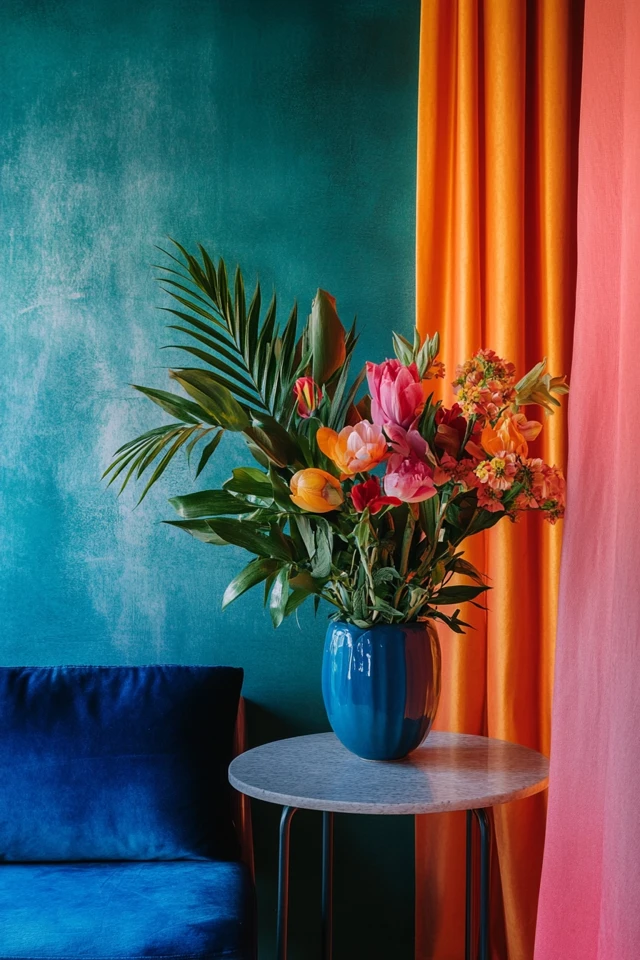
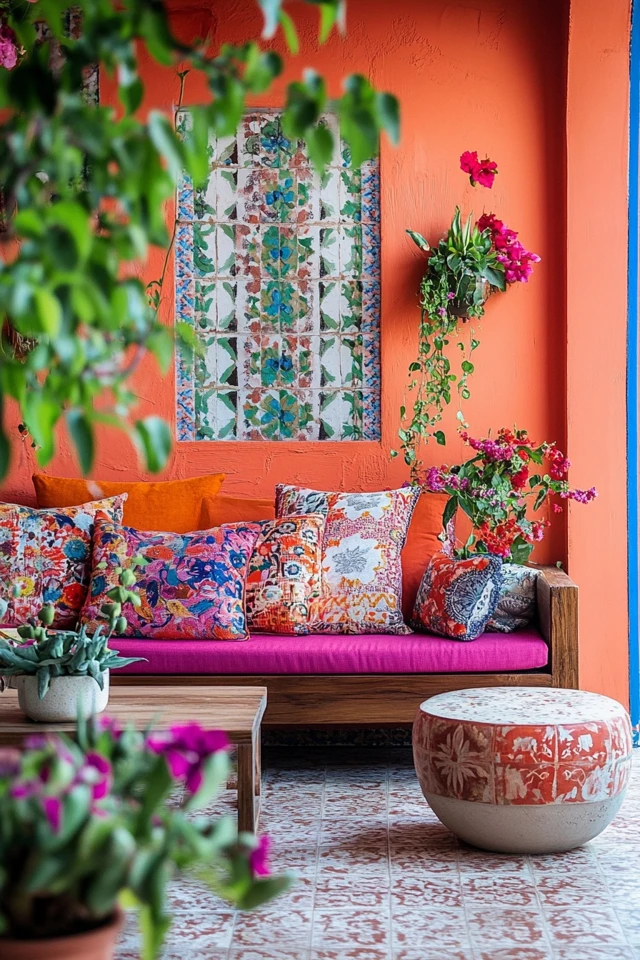
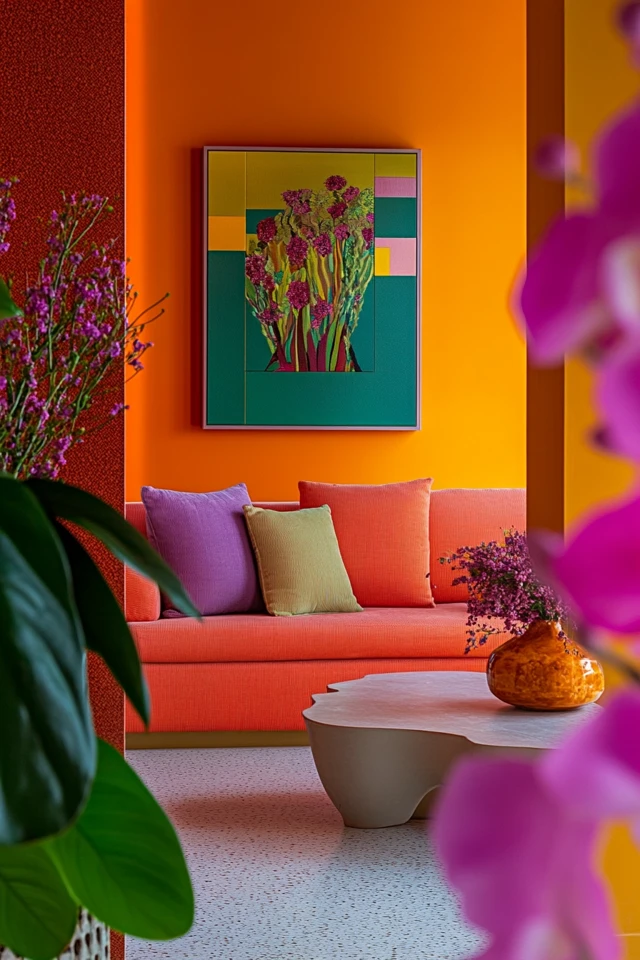
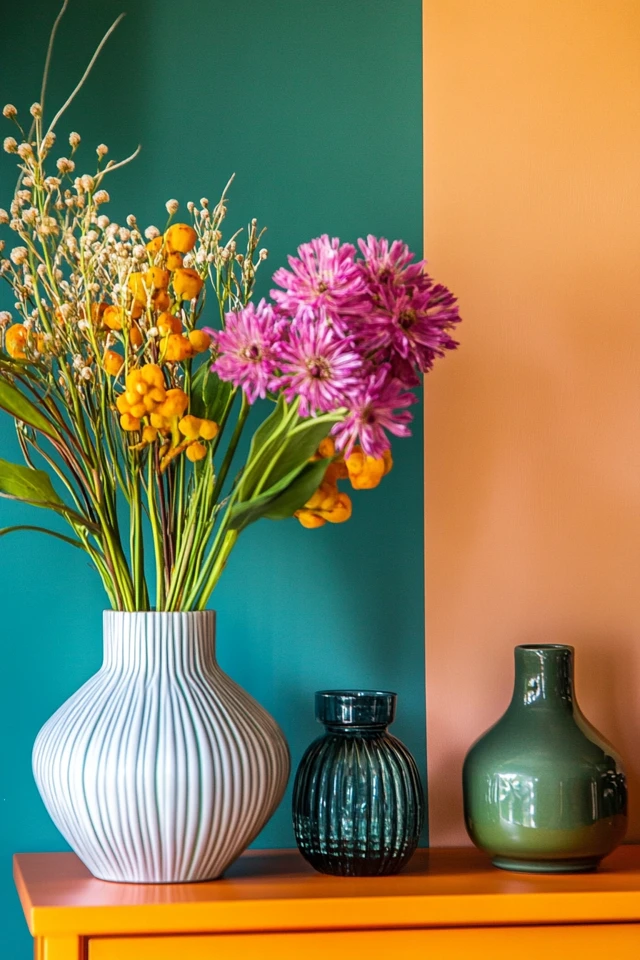
The Psychology of Color
Understanding how different colors affect mood can help you choose the right palette for your room.
- Blue: Calming, serene, and perfect for bedrooms or study areas.
- Yellow: Cheerful and energizing—great for kitchens or creative spaces.
- Green: Restful and grounding, ideal for living rooms or workspaces.
- Pink: Soft and romantic, perfect for a cozy, feminine vibe.
- Red: Bold and stimulating—best used sparingly in bedrooms or living spaces.
Conclusion
Designing a colorful aesthetic room is all about balance and intentionality. By starting with a neutral base, sticking to a cohesive color palette, and layering color through textiles, décor, and accents, you can create a space that’s vibrant, stylish, and uniquely yours.
Remember, color is personal. What makes your room feel alive and inspiring may differ from someone else’s style—and that’s what makes your space special. Don’t be afraid to experiment, trust your instincts, and have fun with the process.
So, grab a paintbrush, some colorful pillows, or a bold piece of art, and start transforming your room into the colorful aesthetic haven of your dreams—without ever feeling like it’s too much.
FAQs
1. How can I add color to my room without painting?
Incorporate colorful throw pillows, rugs, curtains, artwork, or furniture to add vibrancy without painting your walls.
2. What’s the easiest way to balance bold colors?
Pair bold colors with neutral tones, like white, beige, or gray, to keep the room grounded and harmonious.
3. Can I mix multiple bright colors in one room?
Yes, but stick to 2-3 main colors to avoid overwhelming the space. Use smaller accents to introduce additional shades.
4. How do I create a colorful room that still feels sophisticated?
Choose rich, saturated tones (like emerald green or navy blue) and pair them with luxe materials like velvet, brass, or wood.
5. What’s the best way to avoid color overload?
Start with small pops of color and build up gradually. Focus on one statement piece per area and balance it with neutral elements.

